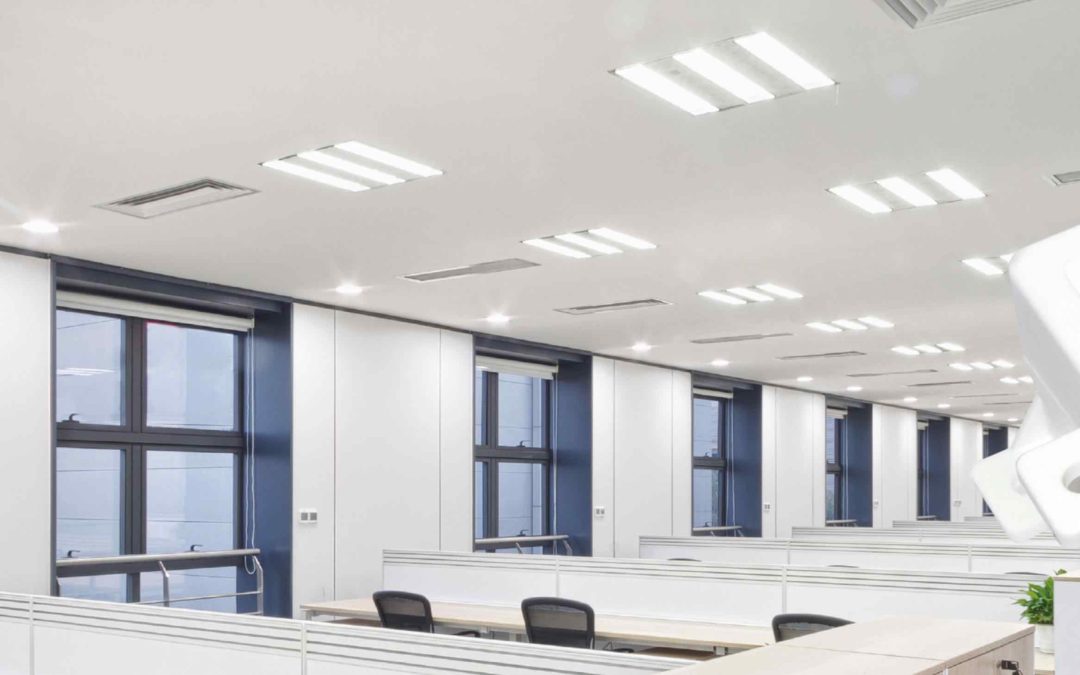Smart Lighting & Internet of Things IoT
Smart Technology could generally be described as reactive in some manner with the user, participant or occupant of a space or even a virtual environment. For instance, an escalator in a renovated space like an airport which only moves its steps when a sensor senses that someone is about to step onto it would be an example of a smart escalator, as compared with an everyday, standard, “dumb” one that runs all the time. Smart Lighting, as a subset of Smart Technology on whole, specifically describes a lighting fixture, a lighting solution, or a lighting system that is in some way adaptive or reactive to the users in an application setting, instead of always delivering the same color and intensity of light all the time, irrespective of environmental inputs or factors.
Product Features
Smart Lighting, therefore, includes LED light fixtures, for example, that have motion sensors — or other LED luminaires that may have infrared (IR) sensors or auto-shutoff switches and other such features. Smart Lighting also includes fixtures with sensors that monitor how much ambient light is already coming in through a room’s side windows, doors or skylights. Additionally, it will adjust the light output of the fixtures to deliver a consistent level of light in the room (a constant lumen output level) additive to the light from outdoors. Beyond the existence of mere on-fixture sensors as features, however, Smart Lighting can also refer to the ability to commission fixtures or connect and associate the performance of groups of connected lighting fixtures. This includes fixtures that are enabled with lighting control system technology such as Bluetooth® and / or that can be controlled or operated or monitored or optimized through a Smartphone app or some other remote monitor, terminal, tablet or computer. This is generally what is referred to as the “Internet of things” or “IoT” – in other words, connecting everything up via accessibility remotely (most likely wirelessly over the internet in some manner). The convenience of IoT-enabled, connected lighting devices cannot be overstated, as IoT allows for centralized, constant, and most efficient deployment of resources to service different installations across a wide area, theoretically globally and from anywhere. Rather than an additional technical support people in each timezone to troubleshoot across installations in any given geographical region, the IoT tech support representative could theoretically be sitting on a beach in Hawaii while taking support inquiries from Boston, Tokyo, Madrid and Cairo.
Energy Savings
The types of issues these Customer Service representatives are able to address in a centralized way run the gamut and can include anything from how to address installation questions to how to commission the lighting, especially when the connecting lighting systems group fixtures to function together across different kinds of ‘scenes.’ For instance, one scene that may be configured in a smart control system could be to turn all of the lights in a room ON. Additional scenes that could be pre-programmed as intelligent lighting IoT solutions could use buttons on a Smartphone interface or wall panel that turn ON only the connected lighting in the back of a large room while turning the front lights OFF, if someone was showing a presentation on a screen (if the situation required it to be dark for the projected slides that everyone is looking at in front of them, but still wanted some lights on in the back of the room). There are very few limits on smart, connected lighting systems in terms of lighting control (and energy efficiency, since manipulating lighting to act smarter often means only using it where it’s needed). For instance, smart lighting systems can also be programmed to auto-dim to a minimum output level (unless they sense motion, etc.) between the hours during which daytime staff leave an office and cleaning crews enter later. For safety reasons, lighting is usually not completely shut OFF during that time frame, but if it were dimmed instead when nobody was there, think of the energy efficiency it could achieve! The lighting industry has known about these benefits for years now, and early adopters of this kind of smart, connected lighting system technology have been driving down their energy costs and usage via energy efficient lighting for quite some time.
The Importance of Design
Smart Lighting doesn’t only relate to lumen output, however. Sometimes it refers to the quality of light that emanates from a luminaire. Circadian rhythm has been of recent interest in the lighting industry. How we humans react in terms of overall alertness and efficiency based on the lighting we experience during different times of day, compared with the natural lighting that occurs outside at those same times, has been proven to be a factor in employee happiness and productivity. So, suppose a lighting system equipped with IoT applications that includes changing the Kelvin color temperature (CCT) of light is employed in a space. In that case, it can help room occupants who may be sensitive to this type of environmental input. We are now also seeing that luminaires are being equipped with more “Dim-to-Warm” or “Warm Dimming” LED technology whereby two LED chips are used within fixtures so that the light automatically blends to create a lower Kelvin output at lower lighting levels. This, in concert with a smart lighting IoT solution, could be beneficial.
Security & IoT
As with any Internet-based technology, IoT-enabled technology does come with some degree of risk. It is important to select IoT lighting specialists that you can trust as providers of IoT devices (hardware and software) since these smart lighting systems will be accessible online, by definition (the Internet of Things IoT). As such, individual Internet of Things IoT lighting system components (particularly software) can be vulnerable to the hacking attempts of bad actors. Lesser known, lesser established or foreign entities offering IoT-enabled devices may not be as up to snuff with security protocols as better known, trusted ones or those working with specialists in developing these devices and programs. Fulham’s EliteControl IoT product assortment consists of SIG Qualified mesh drivers, sensors and devices that enable building system interaction and linkage via the Cloud. This includes sensors, switches, software and a Bluetooth Internet of Things IoT gateway, some of which were developed jointly with specialists specifically for security purposes. As time marches forward, it seems inevitable that the world (and the lighting industry at large) will progress and migrate toward incremental adoption of smarter, reactive IoT technologies and connected devices for convenience, to become more energy efficient, and to realize money savings. As IoT-enabled components and finished goods production ramp up and overall adoption of these IoT-enabled technologies occur across industrial, commercial and residential areas of life, prices for them will also start to adjust accordingly. This can cause efficiencies of larger-scale production and the forces of Supply & Demand to favorably affect price levels. The energy savings and convenience of the smart, connected lighting solutions available today far overshadow the upfront costs for many of these technologies through intelligent lighting IoT technology. When considering the return on investment (ROI) of Smart Lighting technologies, if one has the cash flow / the comfortable cash position to embrace smart technology in the short run, it pays for itself down the road, contributing to cost savings and greater competitiveness. IoT is not a fad and it’s not dead; it’s just getting started and here to stay.




